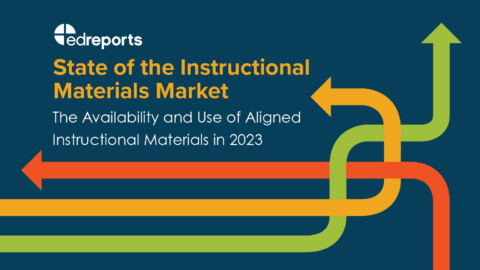Quality Curriculum Drives Evidence-Based Teacher Practices
Discover how quality instructional materials empower educators with evidence-based tools for effective instruction and fostering student success.
Latest Resources
article
4 Steps to Ensure High-Quality Curriculum Leads to Impact
To leverage quality curriculum for improved student outcomes, prioritize teacher-led adoption and ongoing, curriculum-based professional learning.
article
State of the Instructional Materials Market 2023
Explore our latest study revealing that while quality K-12 curriculum availability in ELA, math, and science has grown, classroom usage still lags behind.
article
Centering Quality Materials in Teacher Preparation Programs
Veteran educators share advice on how to reimagine teacher prep to ensure curriculum literacy.


